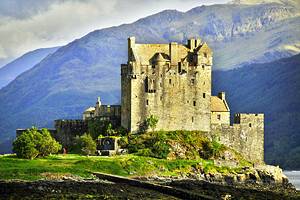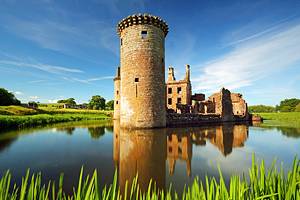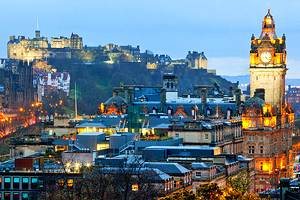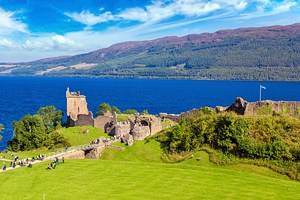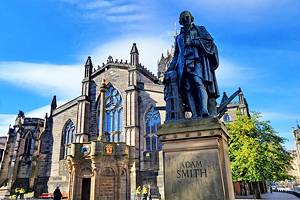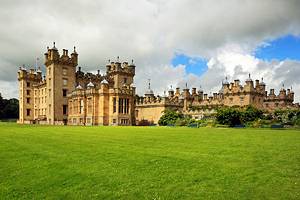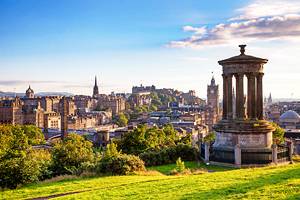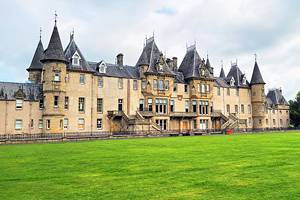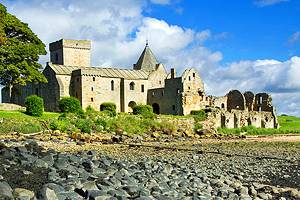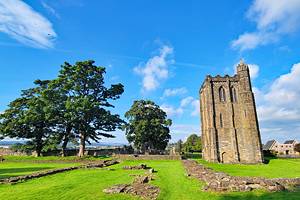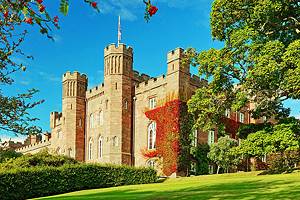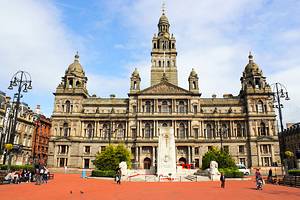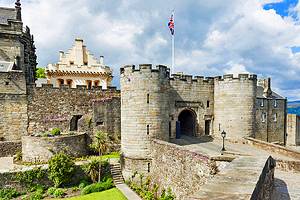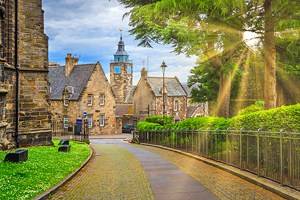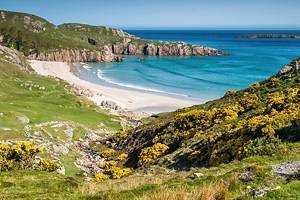Visiting Edinburgh Castle: Must-See Highlights
Although it's not quite the oldest castle in Scotland — this honor goes to Argyll's — Edinburgh Castle is certainly the country's most famous fortress. While a castle had stood on this spot since the 11th century, most of the current structure has towered above the city of Edinburgh since the 13th century. The exception is the castle's small church, St. Margaret's Chapel, which dates back 100 years earlier.
This stunning fortress is certainly one of Scotland's most popular tourist attractions. Perched high atop a dramatic black basalt outcrop that was once, millions of years prior, an active volcano, Edinburgh's spectacular castle affords magnificent views of many of the city's most interesting places to visit. These include the Royal Mile, Princes Street, and the long green swath of Princes Street Gardens. It's also located just a short walk away from the Palace of Holyroodhouse, the Queen's official residence in Scotland.
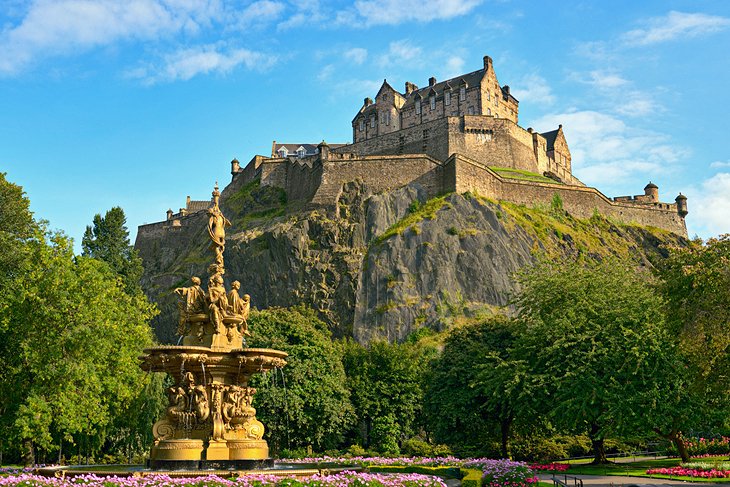
The history of Edinburgh Castle is long and often both poignant and violent, a fact that has led to its reputation as one of the most haunted places in all of Bonnie Scotland. One of the most notorious events to have occurred here was the infamous "Black Dinner." Held at the castle in 1440, the dinner was a ruse used to lure members of the Douglas clan, one of the country's most influential families, to their death.
From the broad Esplanade, where the famous Edinburgh Military Tattoo is held every August, you'll cross a drawbridge over a moat to enter the castle through the Portcullis Gate. Built in the late 1500s on the ruins of a 14th-century tower, this gate posed an impressive obstacle to anyone trying to storm the castle, with three heavy doors and the spiked portcullis blocking entry.
Above the gate is the Argyle Tower. This impressive building was named for the Marquis of Argyle, who was imprisoned here. On the way into the castle, you'll pass bronze statues of legendary heroes William Wallace and Robert the Bruce.
To help you make the most out of your time at this important Scottish landmark, be sure to refer often to our handy guide to visiting Edinburgh Castle.
The Royal Palace
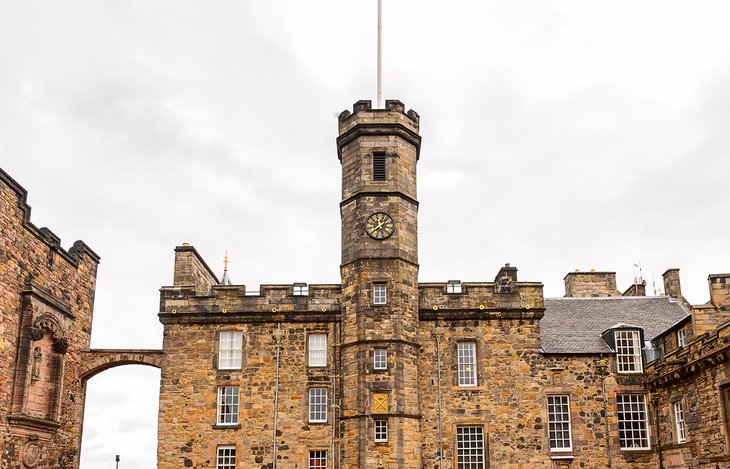
The Royal Palace inside Edinburgh Castle was the official residence (and refuge in times of danger) of the later Stuart monarchs, including Mary Queen of Scots. Look over the entrance to the Royal Apartments for the gold letters MAH, representing the initials of the Queen and her husband Henry Stewart, Lord Darnley.
Among the most interesting of the restored rooms is the Laich Hall, with its lovely fireplace. The small adjoining room is where Mary Queen of Scots gave birth to the future King James VI of Scotland (and James I of England) in 1566.
Official site: www.edinburghcastle.scot/see-and-do/highlights/the-royal-palace
The Scottish Crown Jewels and the Stone of Destiny
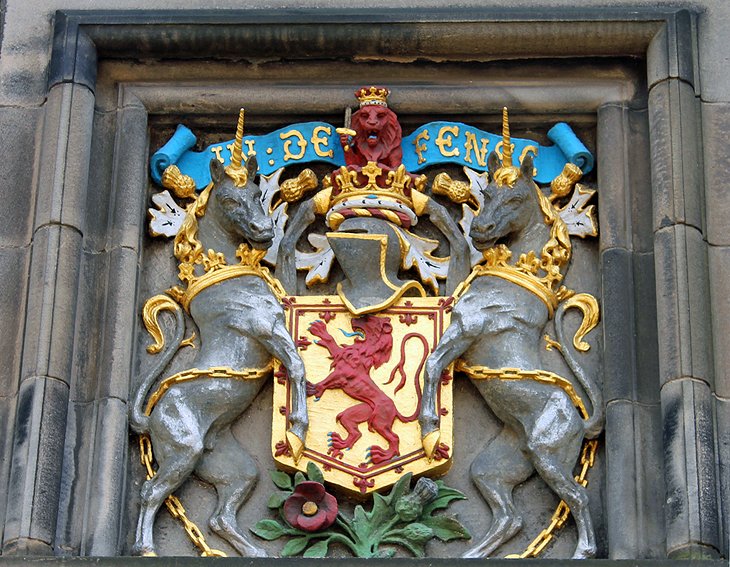
For centuries, the Royal Palace was the repository for state documents and the Scottish Crown Jewels. Also known as the "Honours of Scotland," they were removed on two occasions: in 1291, Edward I sent all papers and jewels to London; and 400 years later, just before Oliver Cromwell captured the castle, the regalia was taken to Dunnottar Castle for safekeeping.
The regalia was returned to Edinburgh in 1707, but was locked away to ensure the Scottish public wouldn't be roused to anger by the sight of them. The oak chest they were stored in was finally opened in 1818, and the contents have been displayed in the Crown Chamber ever since, as well as a scepter dating from 1494 given to James VI by Pope Alexander VI.
Also in the chest are a sword presented to James IV by Pope Julius II in 1501, and a 16th-century crown made from Scottish-mined gold, with 94 pearls and 40 jewels. Along with the scepter, these were first used together at the coronation of Mary Queen of Scots in 1543 and are the oldest crown jewels in the British Isles.
Here, you can also see the famous Stone of Destiny (aka, the Stone of Scone), the coronation stone taken by Edward I and stowed under the English throne in London, only returned to Scotland in 1996.
The Great Hall
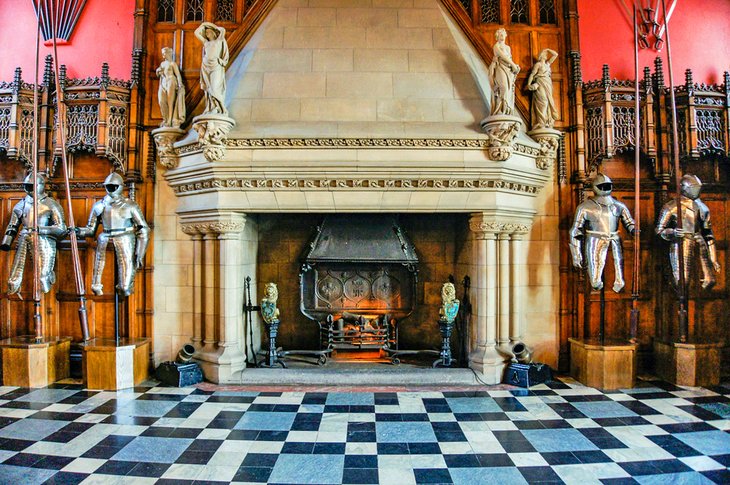
Located at the south side of Crown Square, the Great Hall was built shortly before the death of King James IV in 1511 and was used for state ceremonies and as the meeting place for the Scottish parliament until 1640.
During Cromwell's occupation, the building was used as a barracks and later as a military hospital. It was restored at the end of the 19th century, and although its appearance changed, the hall's original wooden ceiling remains intact.
The Great Hall now houses a comprehensive collection of arms and armor, and stained-glass panels added at the restoration commemorate Scotland's monarchs.
Official site: www.edinburghcastle.scot/see-and-do/highlights/the-great-hall
Scottish National War Memorial
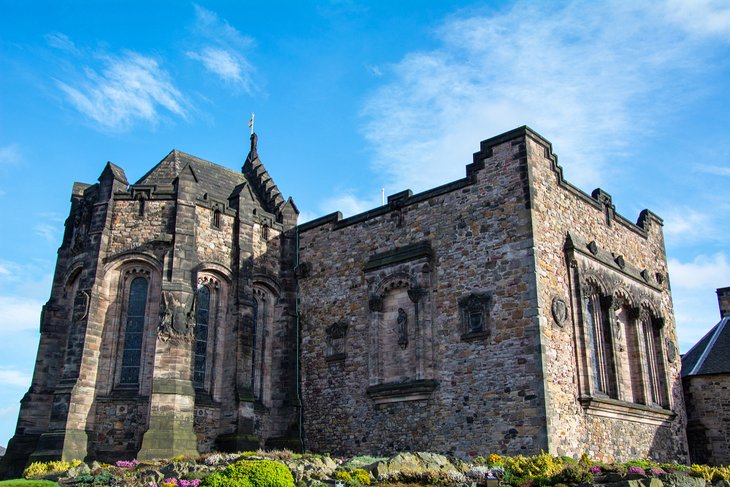
On the north side of Crown Square, the Scottish National War Memorial was built in memory of the many Scots who died in World War I. Each regiment has its own memorial, and even the animals that worked alongside the soldiers are remembered in its iconography. A silver shrine holds the roll of honor with the names of 150,000 dead.
Many well-known artists were invited to help with the final decorations of the memorial, which was consecrated in 1927. The memorial's website (www.snwm.org) contains a searchable database of all those commemorated here.
The One O'Clock Salute
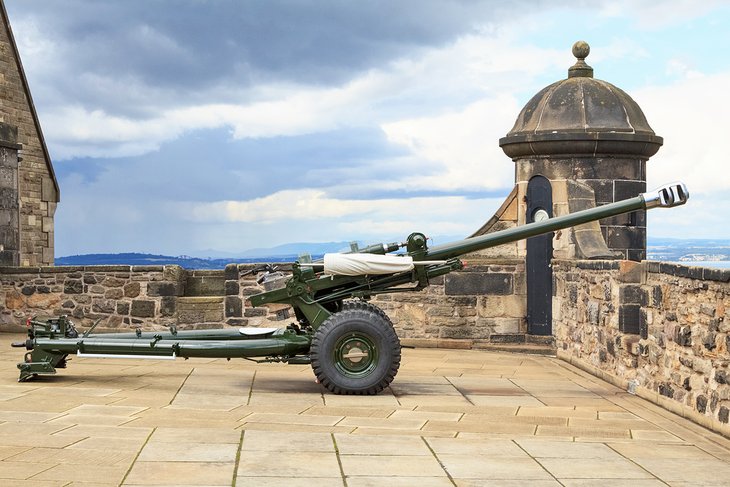
A "time cannon" near the Half Moon Battery — the distinctive curve-walled section of the castle — is fired at 1pm every weekday. At the same time, a time ball drops at the Nelson Monument on Calton Hill, part of a tradition that dates back to the days when ships on the Firth of Forth checked their chronometers by training a telescope on the castle.
The 18-pound cannons on the battery were all made in nearby Falkirk in 1810 for the Napoleonic War.
St. Margaret's Chapel
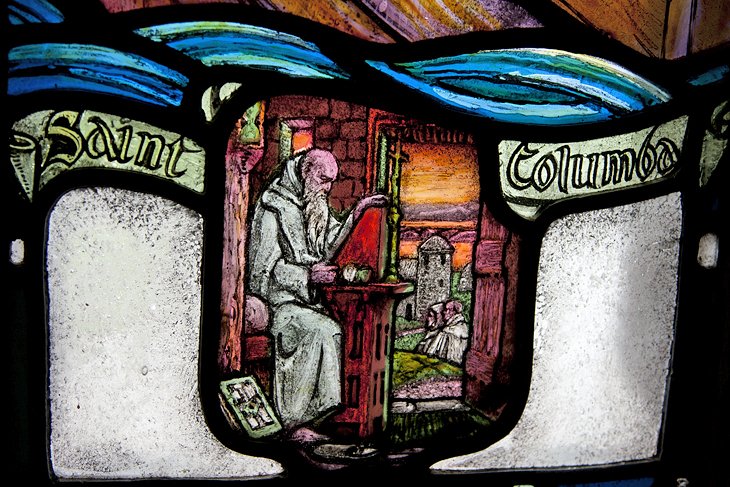
One of the first attractions you'll see as you climb to the castle is St. Margaret's Chapel. Built in 1130, it is not only the oldest building in the castle (and in Edinburgh), but is in fact the oldest building in all of Scotland.
It was constructed by King David I to honor his mother, St. Margaret, who died in the castle in 1093 and was canonized in 1250. Despite its size — it's only 17 feet long and 11 feet wide — this interesting example of early Norman architecture was used as a Royal Chapel until the reign of Mary Stuart and was restored in 1845 at the request of Queen Victoria.
The beautiful stained-glass windows, added in 1922, were designed by Douglas Strachan and depict St. Andrew, St. Columba, St. Margaret, and Sir William Wallace. The chapel arch is original. Today, it's a popular place for small weddings and baptisms.
Official site: www.stmargaretschapel.com
Prisoners of War Museum
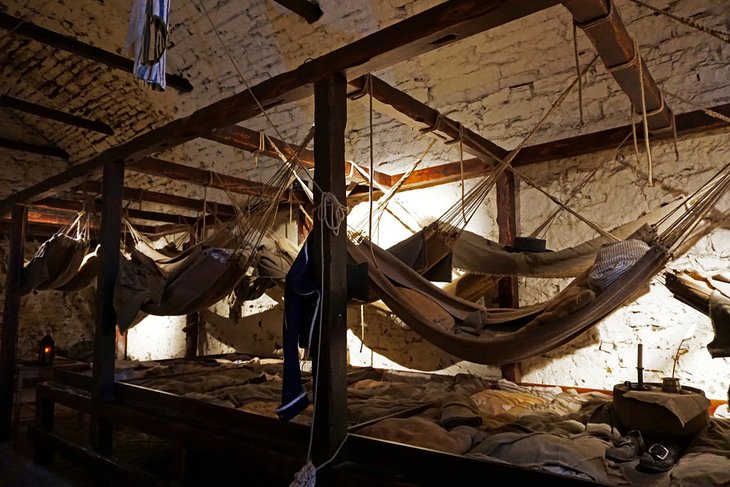
During the Napoleonic wars, French prisoners — including pirateers and child soldiers as young as five — were interned under the Great Hall. The captives' lives were reasonably tolerable (at least compared to prisons of that era), and they were allowed to spend their time making toys and jewelry boxes.
Others became so successful at making counterfeit money that, in 1812, local banks put a notice in the Edinburgh Gazette offering a reward to anyone who could provide information about the forgers.
Later, Americans, Spaniards, Poles, and prisoners from other corners of the world were imprisoned here. Their living quarters are fascinating to explore because they are restored as accurately as possible and very well interpreted with signage and background information.
Official site: www.edinburghcastle.scot/see-and-do/highlights/prisons-of-war
Mons Meg
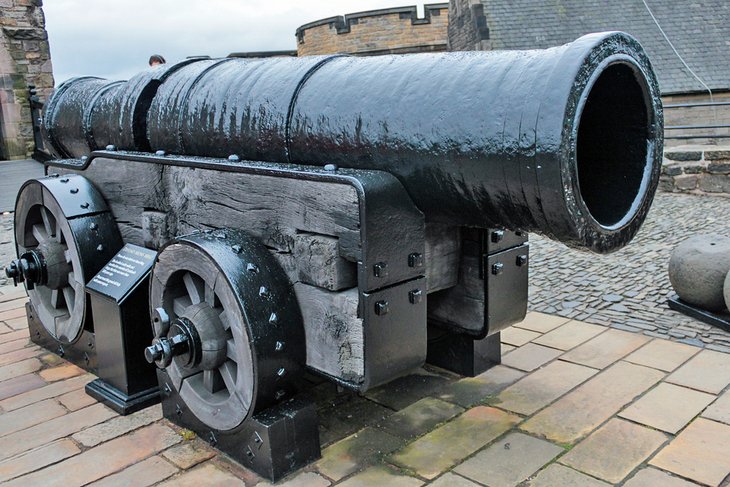
The mammoth Mons Meg cannon is quite a contrast to the tiny and contemplative St. Margaret's Chapel, which it stands beside. Manufactured in Mons, Flanders in 1449 and at the cutting edge of military technology at the time, it was presented to James II by the Duke of Burgundy in 1457.
This mighty cannon was so powerful that with 110 pounds of gunpowder, it could propel a 550-pound cannonball for two miles. Mons Meg saw action several times, including during the siege of Roxburgh Castle in 1460. In 1558, it was fired to celebrate the marriage of Mary Queen of Scots. Today, it is popular with tourists, who can't resist putting their heads into the enormous barrel.
Official site: www.edinburghcastle.scot/see-and-do/highlights/mons-meg
The National War Museum of Scotland
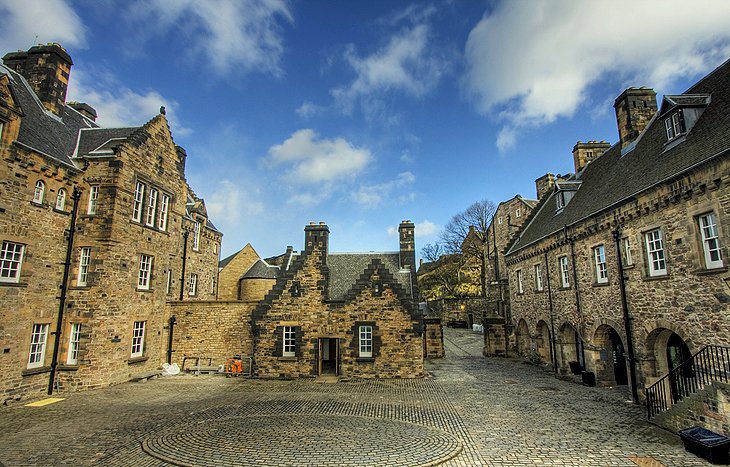
The impressive National War Museum of Scotland was founded in 1933 to display uniforms, weapons, and other memorabilia from the Scottish regiments. It's also home to a number of important paintings, including Robert Gibb's Thin Red Line.
Two regimental museums are also in the castle grounds: The Royal Scots Dragoon Guards Museum portrays the history of the regiment from its founding in the 17th century by King Charles II to fight religious dissenters, and includes the Eagle and Standard of the 45th French Infantry captured during the charge of the Scots Greys at Waterloo in 1815.
The Royal Scots Museum tells the story of the regiment since its formation in the castle in 1633, including its 149 battle honors. (While admission to the museum is free, you do have to pay to enter the castle grounds.)
Official site: www.nms.ac.uk/national-war-museum/



